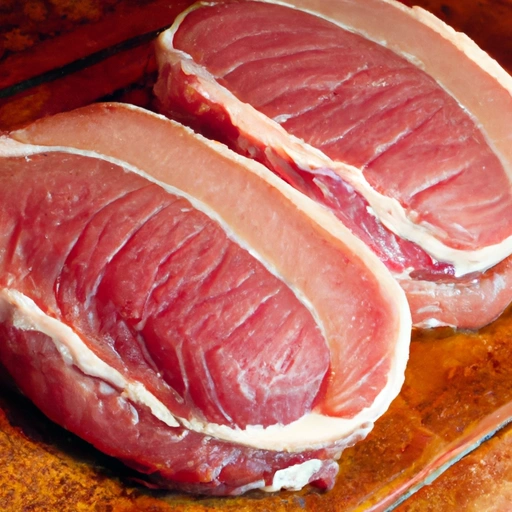Pork Tenderloin
Description

Pork tenderloin, also known as pork fillet, is a highly appreciated cut of meat from the loin of the pig. It is one of the most tender and lean cuts available, making it a popular choice for a variety of dishes. Pork tenderloin is typically sold as a long, narrow, and boneless piece of meat. It has a delicate flavor and a fine-grained texture that absorbs marinades and seasonings well, enhancing its natural taste. Its adaptability makes it a favorite in kitchens worldwide. When purchasing pork tenderloin, it is often found in weights ranging from 0.5 to 1.5 pounds (225 to 675 grams), catering to both small and large meal preparations.
Common uses
Pork tenderloin is a versatile ingredient that can be used in a wide array of dishes. It is commonly served as the main protein in entrées, sliced into medallions for sautéing, or left whole for roasting. In addition, it can be cubed for stews and stir-fries or sliced thinly for sandwiches and salads. Its lean nature makes it a favored choice for those looking to enjoy a hearty meat dish without excessive fat.
Nutritional value
Calories
A 3-ounce (85 grams) cooked serving of pork tenderloin contains approximately 122 calories.
Protein
This same serving size provides about 22 grams of protein, making it an excellent source for muscle repair and growth.
Fat
Pork tenderloin is notably lean, with around 3 grams of fat per serving, of which less than 1 gram is saturated fat.
Carbohydrates
It contains no carbohydrates, making it suitable for low-carb diets.
Vitamins
The cut is a good source of B-vitamins, particularly vitamin B6 and niacin, which are important for energy metabolism.
Minerals
It also provides essential minerals such as phosphorus, selenium, and potassium.
Health benefits
The lean quality of pork tenderloin makes it a healthier choice for those looking to reduce their fat intake. The high protein content supports muscle maintenance and growth, while the presence of B-vitamins helps in energy production. Selenium, an antioxidant found in pork tenderloin, plays a role in immune function and thyroid hormone metabolism.
Potential risks
While pork tenderloin is lean, overconsumption of any type of red meat may be associated with certain health risks, such as higher cholesterol levels and an increased risk of certain chronic diseases. It should be consumed in moderation and as part of a balanced diet. Additionally, proper cooking to an internal temperature of 145°F (63°C) followed by a 3-minute rest time is crucial to prevent foodborne illnesses.
Common recipes
Pork tenderloin can be featured in recipes such as roasted pork with herbs, marinated pork medallions, pork stir-fry, and stuffed pork fillets.
Cooking methods
It can be cooked using various methods, including grilling, roasting, sautéing, and slow-cooking. The key is to avoid overcooking, as it can quickly become dry due to its low-fat content.
Pairing with other ingredients
This cut pairs well with a variety of flavors, from sweet glazes and fruit-based sauces to savory herbs and robust spices. It complements sides such as roasted vegetables, mashed potatoes, rice, or salads.
Summary
Pork tenderloin is a prized cut of meat due to its tenderness, lean profile, and versatility in cooking. With its nutritional benefits and wide range of culinary applications, it's a valuable ingredient for both home cooks and professional chefs around the world. Whether roasted, sautéed, or grilled, pork tenderloin provides a delicious centerpiece to any meal.